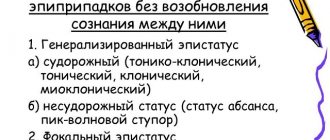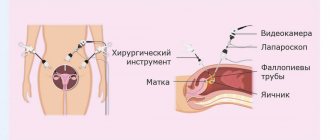Chronic appendicitis is a sluggish form of inflammation in the appendix. This organ itself is a vermiform appendix of the cecum, which, according to recent data, is related to the formation of immunity. However, the appendix is vulnerable, and often in the medical surgical practice of the Laboratory and Clinical Center in Yeisk one has to deal with a disease such as chronic appendicitis. This disease occurs against the background of once suffering an attack of acute appendicitis, which was not subjected to surgical treatment.
Role of the appendix
Some patients wonder: if appendicitis is a fairly dangerous disease that can occur in any person, then perhaps it would be advisable to remove the appendix for preventive purposes in order to avoid the development of pathology?
Previously it was believed that the vermiform appendix is a rudiment. That is, once the appendix had a slightly different appearance and was a full-fledged organ: people who lived in ancient times ate completely differently, and the vermiform appendix participated in the digestive processes. Due to evolution, the human digestive system has changed. The appendix began to be passed on to descendants in its infancy and ceased to perform any useful functions. At the beginning of the 20th century, vermiform appendices were even removed from infants to prevent appendicitis. Then it turned out that the importance of the appendix is greatly underestimated. Patients who had their appendix cut out in childhood had significantly reduced immunity and were much more likely than others to suffer from various diseases. These people also had problems with digestion. Therefore, over time, doctors abandoned the practice of removing the appendix for preventive purposes.
Modern scientists believe that there are no unnecessary organs in the human body, and if rudiments continue to be passed on from generation to generation, it means they perform some functions (otherwise they would have “died out” long ago). If they do not bother the patient, then there is no need to remove them for preventive purposes. There are several scientific theories regarding the role of the appendix in the modern human body, the most common of which are the following:
- The vermiform appendix is part of the immune system . The wall of the appendix contains a large amount of lymphoid tissue that synthesizes lymphocytes. Lymphocytes are blood cells that provide protection to the body from foreign particles and infections.
- The appendix helps maintain the balance of beneficial intestinal microflora . The intestines are populated by microorganisms involved in digestive processes. Some of them are unconditionally useful and do not pose a threat to the body under any circumstances. Others are opportunistic, meaning they become dangerous only when a number of conditions are met. In a healthy body, the necessary balance is maintained between all microorganisms. With the development of infectious diseases of the gastrointestinal tract (salmonellosis, giardiasis, dysentery, rotavirus infection, etc.), this balance is disrupted, causing digestion processes to suffer. Some scientists believe that beneficial bacteria also live in the appendix, where they are protected from infection. Due to diseases, important microorganisms die in the intestines, but not in the appendix. This allows the intestinal microflora to recover fairly quickly. Beneficial bacteria that multiply in the appendix “exit” into the intestines and normalize the balance. Scientists came to this conclusion when they noticed that patients who underwent surgery to remove the appendix often have problems with the microflora of the digestive tract.
Treatment of appendicitis almost always involves removal of the appendix (except in cases where surgery is contraindicated for the patient), since it is not a vital organ. But this does not mean that as a result of surgery a person will necessarily develop health problems. He will just have to pay more attention to his immunity. And modern drugs - probiotics and prebiotics - help to avoid intestinal dysbiosis.
Types of appendicitis
Appendicitis can be classified according to its form and the nature of its course. The form of the disease is:
- Spicy . It develops rapidly and manifests itself with pronounced symptoms. In the absence of medical assistance, it continues to progress. In very rare cases, self-healing occurs. However, it is not recommended to rely on this possibility; if left untreated, appendicitis can cause serious complications.
- Chronic . Quite a rare form. In most cases, it develops as a result of acute appendicitis in the absence of treatment. It has the same symptoms as acute appendicitis, but the symptoms are more subtle. Like any other chronic disease, it is characterized by periods of exacerbations and remissions.
According to the nature of the course, an acute disease (according to the most common surgical classification) can be uncomplicated or complicated. Types of uncomplicated pathology include:
- Catarrhal (simple, superficial) appendicitis. Only the mucous membrane of the appendix becomes inflamed.
- Destructive (with tissue destruction) appendicitis. It has two forms - phlegmonous (the deeper layers of appendix tissue are affected) and gangrenous (death of the wall of the appendix occurs).
Complications of acute appendicitis include:
- Perforation (rupture) of the wall of the appendix.
- Formation of appendiceal infiltrate (inflammatory tumor around the appendix).
- Peritonitis (inflammation of the peritoneum).
- Development of abscesses (ulcers).
- Sepsis (blood poisoning).
- Pylephlebitis (a purulent inflammatory process that results in thrombosis of the portal vein, a large vessel that delivers blood from the abdominal organs to the liver for its neutralization).
Chronic appendicitis is divided into:
- Residual (residual). It is a consequence of acute appendicitis, which ended in self-healing. It manifests itself as a dull aching pain in the right iliac region. The development of residual appendicitis is often associated with the formation of adhesions.
- Recurrent . Occurs against the background of acute appendicitis. It is paroxysmal in nature: exacerbations occur from time to time, followed by remission.
- Primary chronic . Develops independently, without preceding acute appendicitis.
What it is?
Appendicitis is an acute inflammation of the cecum, also known as the appendix (Figure 1).
Figure 1. The appendix (a), a pouch-shaped extension of the cecum about 7-9 cm long, is located in the lower right quadrant of the abdomen. When the appendix becomes inflamed (b), appendicitis develops. Source: CC0 Public Domain
Appendicitis always manifests itself unexpectedly. This is not the case when acute manifestations of the disease are preceded by a so-called prodromal period. If the appendix hurts, the patient may need emergency care.
Among acute surgical diseases of the abdominal cavity, appendicitis takes an honorable first place - 89% of the total. Most often it occurs in young people aged 15-30 years, and women are more susceptible to this pathology. However, this does not mean that adults and older people do not suffer from this disease - it can occur at 50 or even 70 years of age. Although such cases are rare, they still occur, and the danger to health is much higher, because the older a person is, the more concomitant diseases he has that slow down the recovery process.
Causes of appendicitis
The exact causes of the development of the disease have not yet been established. There are several hypotheses, the most common of which are:
- Infection theory . This hypothesis associates the development of acute appendicitis with an imbalance of microflora inside the appendix, as a result of which bacteria that are safe under normal conditions, for unknown reasons, become virulent (poisonous), invade the mucous membrane of the appendix and cause inflammation. The theory was proposed in 1908 by the German pathologist Aschoff, and some modern scientists adhere to it.
- Angioneurotic theory. Its supporters believe that as a result of psychogenic disorders (neuropsychic disorders, for example, neuroses), vascular spasm occurs in the appendix, due to which tissue nutrition is greatly deteriorated. Some areas of tissue die and then become sites of infection. As a result, inflammation develops.
- Stagnation theory . Proponents of this hypothesis believe that appendicitis occurs due to stagnation of feces in the intestines, as a result of which fecal stones (hardened feces) fall inside the appendix.
Modern doctors come to the conclusion that there is no single cause of appendicitis that is relevant for all cases of the disease. Each specific situation may have its own reasons. Risk factors include:
- Blockage of the lumen of the appendix with a foreign body, helminths, tumors (both benign and malignant).
- Infections. The causative agents of typhoid fever, tuberculosis and other diseases can cause inflammation of the appendix.
- Abdominal injuries, which can cause the appendix to move or become kinked and cause further blockage.
- Systemic vasculitis (inflammation of the walls of blood vessels);
- Binge eating;
- Frequent constipation;
- Lack of plant foods in the diet.
The walls of the appendix become more vulnerable to negative factors when the immune system malfunctions.
Prevention
To reduce the likelihood of acute appendicitis, you should adhere to the following rules:
- include a sufficient amount of fiber in the diet to prevent constipation and putrefactive processes in the intestines,
- avoid uncontrolled use of antibiotics to prevent the development of dysbiosis,
- increase immunity: lead an active lifestyle, avoid bad habits, regularly take vitamin complexes,
Previously, preventive appendectomy was practiced abroad - American doctors removed children's appendixes with the same zeal as Soviet doctors cut out children's tonsils at the slightest sign of a cold. However, this practice has now been abandoned because after prophylactic appendectomy, children suffered from regular digestive disorders and were prone to frequent colds due to weakened immunity.
Symptoms of appendicitis
Symptoms of acute appendicitis are:
- Continuous pain in the abdominal area. It appears suddenly, most often in the morning or at night. At first, the pain is localized in the upper abdomen, near the navel (or “spreads” throughout the entire abdominal area), but after a few hours it moves to the right side - the iliac region (just above the hip). This movement is called the Kocher-Volkovich symptom and is considered the most characteristic sign of appendicitis. At first the pain is dull and aching, then becomes throbbing. The pain is relieved if you lie on your right side or bend your knees towards your stomach. When turning, coughing, laughing and deep breaths become more intense. If you press on the abdomen in the iliac region with the palm of your hand and then quickly release it, the patient will experience a sharp attack of pain. With an atypical location of the appendix, the localization of pain may be different: in the left side of the abdomen, in the lumbar region, pelvis, pubis. The abdominal wall with appendicitis is tense. In some cases, pain may go away on its own, but this does not indicate recovery, but necrosis (death) of the tissues of the appendix. It is imperative to seek medical help, because inaction can cause the development of peritonitis.
- Periodic bowel disorders (diarrhea or constipation).
- Nausea and vomiting that does not bring relief.
- Changes in blood pressure (either increases or decreases).
- Increased heart rate.
- Increase in body temperature: first to 37-38 degrees, then, as the disease progresses, to 39-40. In the interval between these two stages, the temperature may return to normal.
- Dry mouth.
In older people, the symptoms of appendicitis may appear less clearly: minor pain, mild nausea. High temperature and tension of the abdominal wall are not observed in all cases. At the same time, appendicitis in older people is often characterized by a severe course and the development of complications. Therefore, at the slightest suspicion of appendicitis in an elderly patient, you should immediately consult a doctor.
In children under 5 years of age, the symptoms of appendicitis are not as pronounced as in adults. The pain often has no clear localization. Appendicitis in a small child can be recognized by increased body temperature, diarrhea and the presence of plaque on the tongue. Despite the fact that other, much less dangerous diseases may have such symptoms, the young patient must be shown to a doctor.
Self-diagnosis of the disease
If there are suspicions that nagging pain in the lower abdomen is a consequence of appendicitis, then the pathology can be diagnosed at home using the palpation method. To compare sensations, you can gently press on the left area. With appendicitis, these movements will not cause discomfort. The main thing is that movements be careful, since a ruptured appendix can provoke peritonitis.
To diagnose appendicitis, you can resort to a simple method - cough loudly.
In addition, you can press with your palm in the area of the abdomen where the greatest pain is observed. You need to hold your hand for about 10 seconds, at which point the pain subsides. Then we remove our hand and if the pain intensifies, then most likely it is acute appendicitis.
Only doctors can help in this case, so do not hesitate and urgently call a medical team. So, how to independently determine appendicitis in women by symptoms:
- the pain intensifies and then goes away;
- when coughing, laughing, hiccups and any other movements, the pain in the side increases;
- if you turn over from one side to the other, the discomfort increases;
- after vomiting there is no relief;
- Most often, attacks of appendicitis occur in the evening or at night;
- When palpating the abdomen, the patient feels severe pain.
If you suspect you have appendicitis, do not take painkillers under any circumstances.
Diagnosis of appendicitis
A surgeon diagnoses appendicitis. First, anamnesis is collected and the patient is interviewed, as well as a visual examination with palpation of the abdomen. The examination reveals clear symptoms indicating the presence of the disease. The following studies are also carried out (not necessarily all from the list - it depends on the specific case):
- general blood and urine tests (particular attention is paid to the level of leukocytes in the blood - in case of appendicitis it is elevated);
- blood chemistry;
- Ultrasound of the abdominal organs;
- CT scan;
- magnetic resonance examination.
Additional studies may also be prescribed:
- stool analysis (for the presence of hidden blood or worm eggs);
- coprogram (comprehensive stool analysis);
- irrigoscopy (x-ray examination of the intestine);
- laparoscopic examination through the abdominal wall.
Treatment of appendicitis
Treatment of acute appendicitis is almost always carried out surgically. Conservative therapy is carried out only if the patient has contraindications to surgery. For chronic appendicitis, drug treatment can be prescribed not only if there are contraindications to surgery, but also if the disease is sluggish, with rare and subtle exacerbations.
An operation (appendectomy) involves removing the inflamed appendix. It can be carried out in two ways:
- Traditional (classical). The vermiform appendix is removed through an incision in the anterior abdominal wall. The incision is then sutured.
- Laparoscopic. This operation is much less traumatic and has a shorter rehabilitation period. Surgery is performed using a thin laparoscope equipped with a video camera through a small puncture in the anterior abdominal wall.
Before and after surgery, the patient is prescribed antibiotics. The method of surgical intervention is chosen by the doctor depending on the complexity of the case and the presence/absence of complications.









